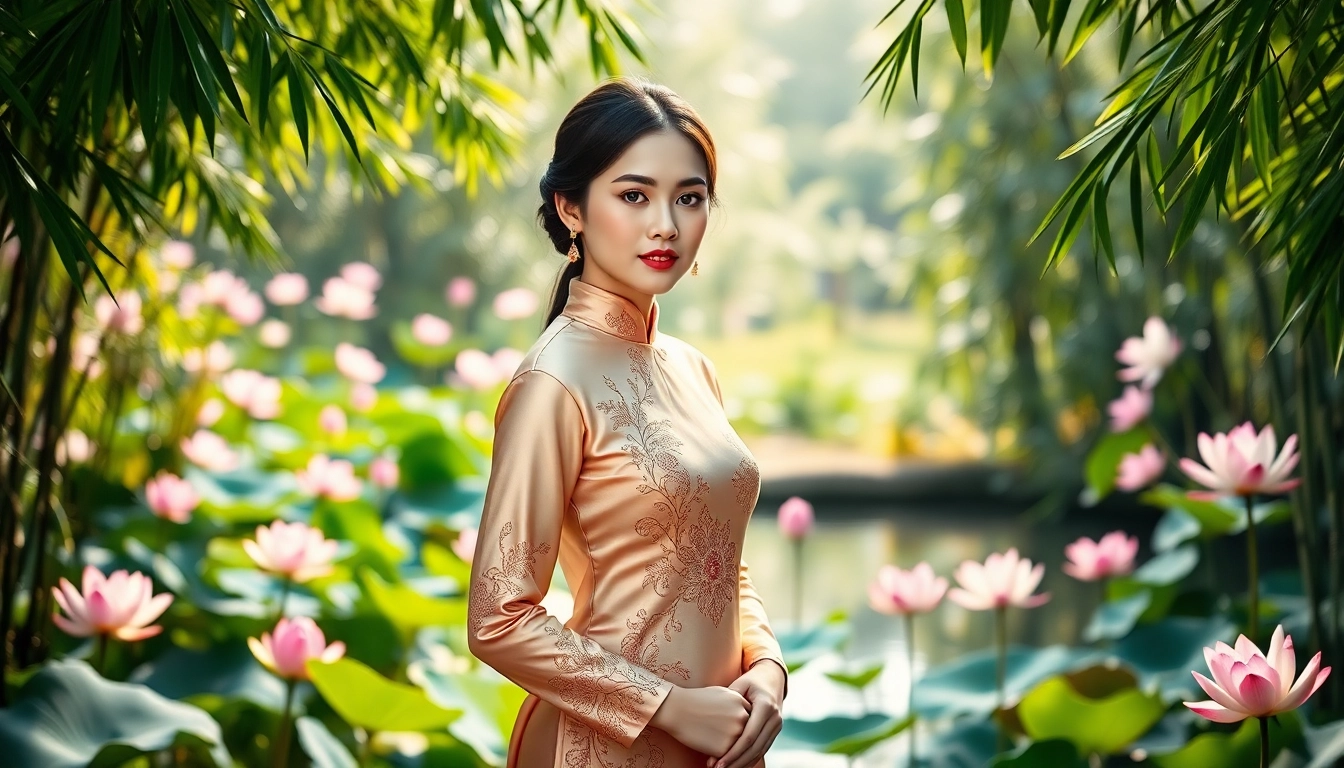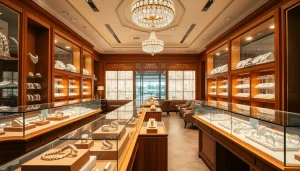Embracing Tradition: The Beauty and Significance of Vietnamese Áo Dài
Understanding the Vietnamese Áo Dài
The Vietnamese Áo Dài is more than just a traditional garment; it embodies the rich culture, history, and identity of Vietnam. This elegant attire, characterized by its unique design, has captured the hearts of many both within the country and abroad, representing the grace and beauty of Vietnamese women. In this article, we delve into the historical context, design intricacies, cultural significance, and more surrounding this iconic outfit.
Historical Background of the Áo Dài
Tracing its origins to the 18th century, the Áo Dài has evolved significantly over the years. Initially influenced by the Chinese clothing style known as the “quần áo,” the garment was a simple, tunic-like dress worn over pants. However, it underwent various transformations, particularly during the French colonial period, when the influence of Western fashion started to reshape Vietnamese clothing.
By the 20th century, the Áo Dài emerged as a symbol of nationalism and cultural pride. This era saw its adaptation to reflect modern tastes while still preserving traditional craftsmanship. The garment eventually became associated with formal occasions, bridging the old and the new in Vietnamese society.
Parts of the Áo Dài: Design and Fabric
The Áo Dài is made up of several distinct parts that contribute to its overall aesthetic. The tunic, which typically features a high collar and deep slits on the sides, is designed to be worn over fitted trousers called “quần.” The fabric selections are as varied as the styles, including silk, cotton, and brocade, each offering a different texture and appearance.
Many artisans also employ intricate embroidery and embellishments, showcasing traditional motifs that often carry personal or cultural meanings. The use of these designs not only enhances the Áo Dài’s beauty but also tells a story, preserving age-old traditions through modern fashion.
Cultural Significance and Modern Interpretations
The cultural significance of the Áo Dài extends beyond aesthetics. It represents a sense of identity and belonging for many Vietnamese people. Traditionally worn during important life events, such as weddings and Lunar New Year celebrations, the Áo Dài remains a cherished artifact of Vietnamese culture.
In recent years, modern interpretations of the Áo Dài have gained popularity, with designers experimenting with new fabrics, cuts, and accessories. This fusion of traditional and contemporary styles has allowed the Áo Dài to maintain its relevance in today’s fashion landscape while still honoring its heritage.
Choosing the Right Áo Dài for Different Occasions
Traditional Celebrations and Weddings
The Áo Dài is predominantly recognized as the attire for weddings, where brides often choose intricately designed pieces that reflect their personal style while adhering to cultural norms. In Vietnamese weddings, the bride typically wears a red or white Áo Dài, symbolizing happiness, good fortune, and purity.
Guests at these ceremonies often wear their own Áo Dài, showcasing a diverse palette of colors and fabrics, contributing to a vibrant atmosphere. Additionally, the Áo Dài worn during traditional ceremonies is befitting the festive and ceremonial nature, often adorned with elaborate details.
Everyday Versatility of the Áo Dài
Beyond special occasions, the Áo Dài can also be adapted for everyday wear. Day-to-day Áo Dài might employ lighter fabrics and simpler designs, making it practical while still stylish. Many modern Vietnamese women opt for this versatile piece, which allows them to express their individuality while remaining culturally connected.
Fashion-forward designs incorporate various styles, including shorter tunics or different types of trousers, allowing for personal expression. This fusion has led to a new generation embracing the Áo Dài in their everyday wardrobes.
Contemporary Styles and Fashion Trends
In the contemporary fashion scene, the Áo Dài has seen a resurgence, particularly among young designers who are blending traditional aesthetics with modern trends. Incorporating avant-garde elements, sustainability, and global influences, designers are redefining the Áo Dài for a new audience.
Fashion shows and cultural festivals highlight these contemporary adaptations, often resulting in an amalgamation of styles that attract attention from both Vietnamese and international platforms. This evolution not only reinforces the garment’s place in modern fashion but also emphasizes the importance of cultural heritage.
Caring for and Maintaining Your Áo Dài
Cleaning and Storage Tips
To maintain the beauty and longevity of an Áo Dài, it is essential to follow proper cleaning and storage practices. Dry cleaning is often recommended, especially for silk materials, to preserve the garment’s integrity. For items labeled as handwash only, use lukewarm water and gentle soap to avoid any damage.
When storing an Áo Dài, folding it carefully and placing it in a cool, dry place helps prevent creasing and color fading. Using breathable garment bags can protect it from dust and potential moth damage. Ensuring that it is stored away from direct sunlight will help to keep fabrics vibrant and true to color.
Repairing and Altering Your Áo Dài
Periods of wear and tear are inevitable with regularly used garments, and the Áo Dài is no exception. Many tailors specialize in repairing and altering Áo Dài, allowing for continued enjoyment of this cherished attire. Small repairs, such as fixing seams, replacing buttons, or mending fabric tears, are standard.
If alterations are needed for fit—whether due to weight changes or simply for a different style—consulting a professional tailor familiar with the intricacies of Áo Dài will ensure that adjustments respect the garment’s aesthetics and structural elements.
Accessorizing the Áo Dài for Various Events
Accessorizing plays a crucial role in enhancing the overall look of the Áo Dài. Traditional accessories, such as conical hats (nón lá), silk scarves, and elegant earrings, complement the ensemble beautifully, adding layers of sophistication. Footwear is also essential; traditional slip-on shoes or elegant heels can complete the look.
Modern interpretations encourage mixing in contemporary pieces, such as statement jewelry or trendy handbags, allowing for personal expression. Experimenting with different accessories creates a unique style for various occasions, whether formal, casual, or festive.
Finding the Perfect Fit: Tailoring Services for Vietnamese Áo Dài
Choosing a Tailor: What to Look For
Selecting the right tailor is pivotal for achieving the ideal fit of an Áo Dài. Look for experienced professionals with a solid reputation for crafting this specialized garment. Reviews and word-of-mouth recommendations are invaluable; seek tailors who understand the cultural significance and the intricacies of the design.
Additionally, a good tailor will take the time to understand your specific needs and preferences, ensuring a personalized experience. Viewing a tailor’s portfolio can also give insight into their style and mastery, which is particularly important for custom designs.
Measuring for the Best Fit
Proper measurements are integral to creating a tailored Áo Dài. The process typically involves measuring various body parts, including bust, waist, hips, shoulders, and arm length. Accurate measurements help in achieving a perfect fit that flatters the wearer’s figure and promotes comfort.
A wise approach involves taking measurements while wearing undergarments similar to what will be worn under the Áo Dài. This attention to detail ensures that the final product will fit flawlessly and feel comfortable during wear.
Examples of Customizations
Customizations can range from minor adjustments to complete reimaginations of traditional designs. Personalized selections of fabrics, colors, and embellishments greatly influence the final appearance. Some may opt for unique embroidery that features symbolic elements relevant to their personal story or family heritage.
Others might experiment with altering the length of the tunic or pants, or even the style of the collar. The possibilities for customization create a personalized garment that resonates with both the wearer’s identity and cultural heritage.
The Future of the Áo Dài in Global Fashion
International Influence of Vietnamese Áo Dài
As cultural exchange continues to flourish, the Vietnamese Áo Dài is gaining recognition on global platforms. Designers around the world are inspired by the elegance and simplicity of the garment, incorporating its silhouettes in contemporary collections. Fashion weeks and international events have shown an increased interest in this traditional attire, further integrating it into global fashion narratives.
The influence of the Áo Dài can also be seen in cinematic portrayals and cultural exhibitions beyond Vietnam, paving the way for greater appreciation and understanding of Vietnamese fashion and culture.
Emerging Designers and Modern Fashion
The future of the Áo Dài is bright with a new wave of emerging designers who prioritize sustainability and innovative design techniques. Many of these creators are passionate about preserving traditional craftsmanship while also addressing contemporary fashion needs. Their collections often blend modern aesthetics with classic elements of the Áo Dài, carving out a niche in the fashion industry.
This new generation’s commitment to ethical production and environmentally friendly materials reflects a significant shift in consumer values, encouraging the continued relevance of the Áo Dài in the ever-evolving fashion landscape.
Conclusion: Preserving Heritage in Modern Times
The Vietnamese Áo Dài transcends its role as a mere garment; it serves as a powerful symbol of cultural identity, tradition, and modern fashion innovation. As the world becomes increasingly interconnected, the Áo Dài illustrates the beauty of preserving heritage while embracing contemporary influences.
By honoring its history and adapting to modern styles, the Áo Dài stands as a testament to the resilience and creativity of Vietnamese culture—a garment that continues to captivate hearts while echoing the values of tradition and individuality.



